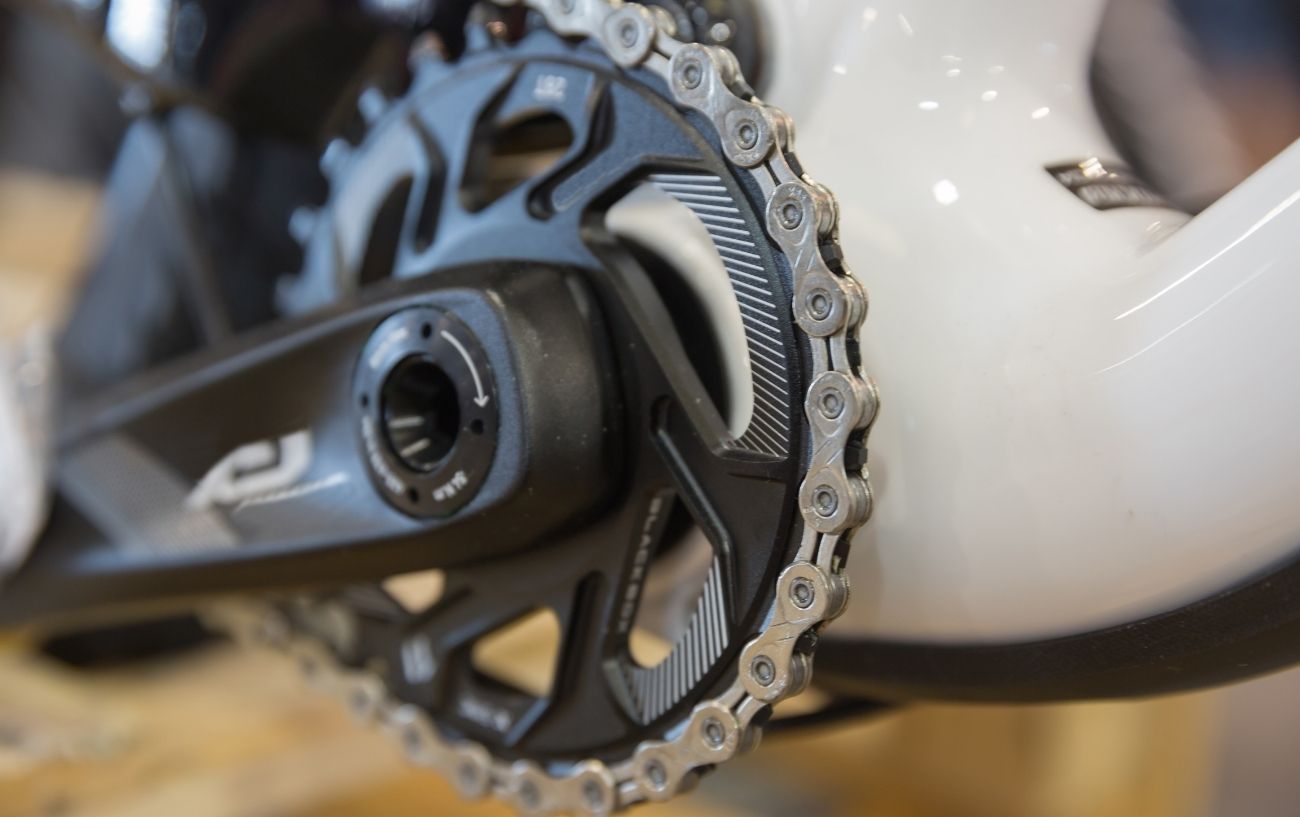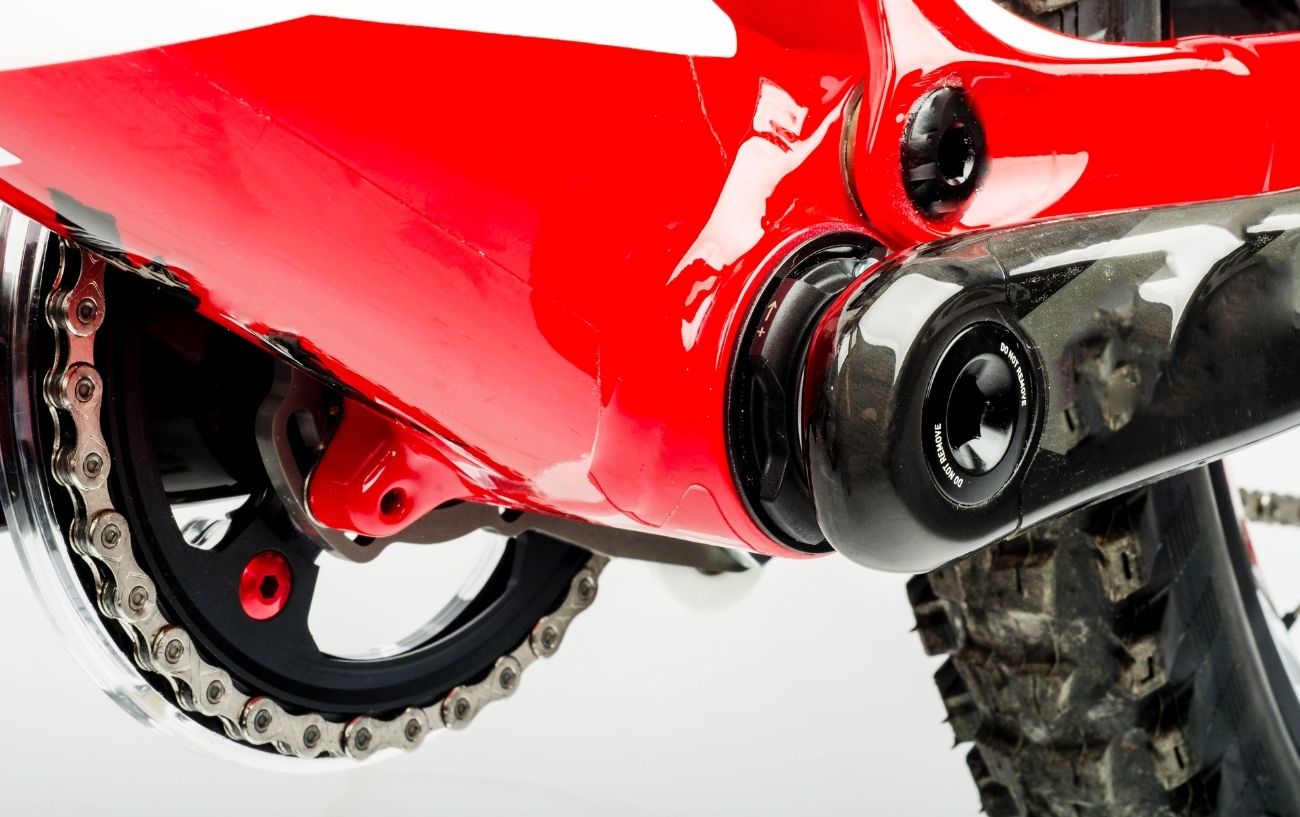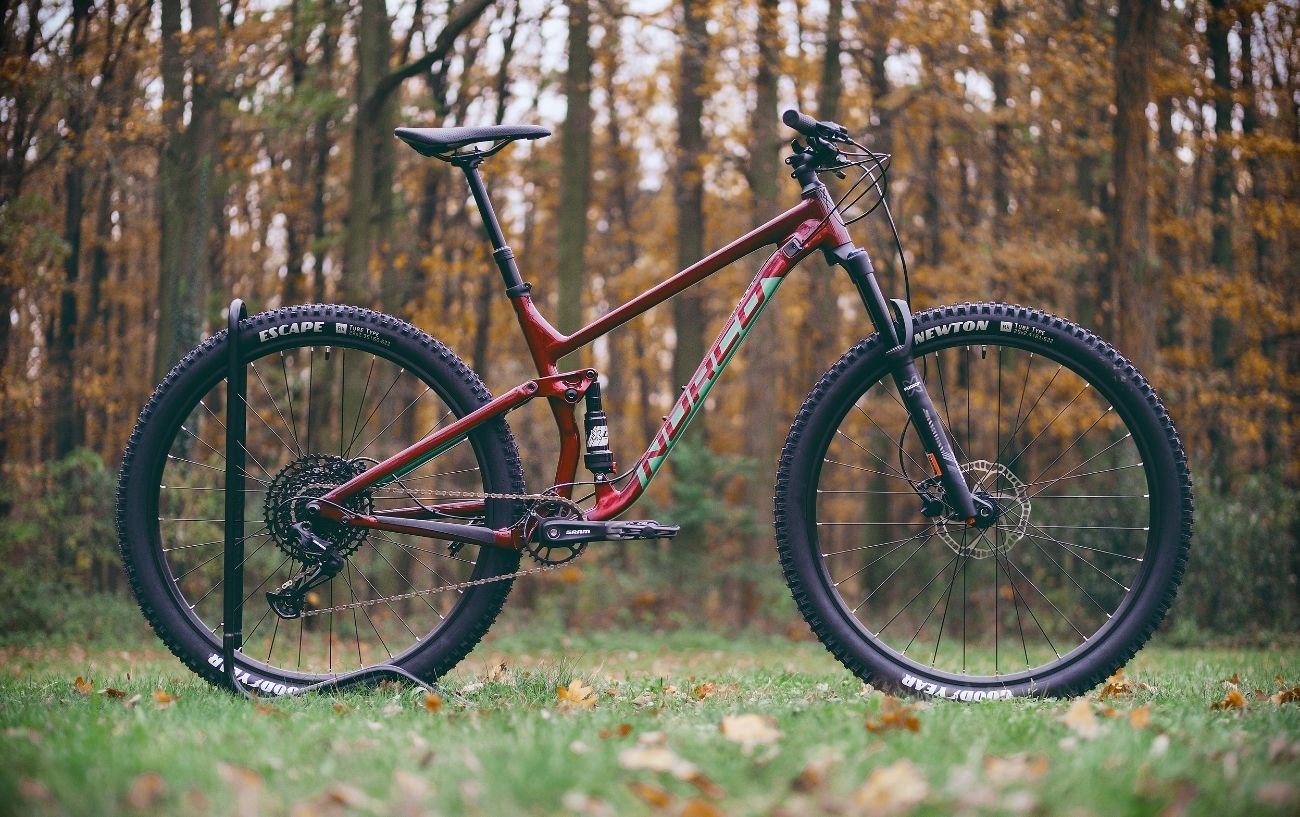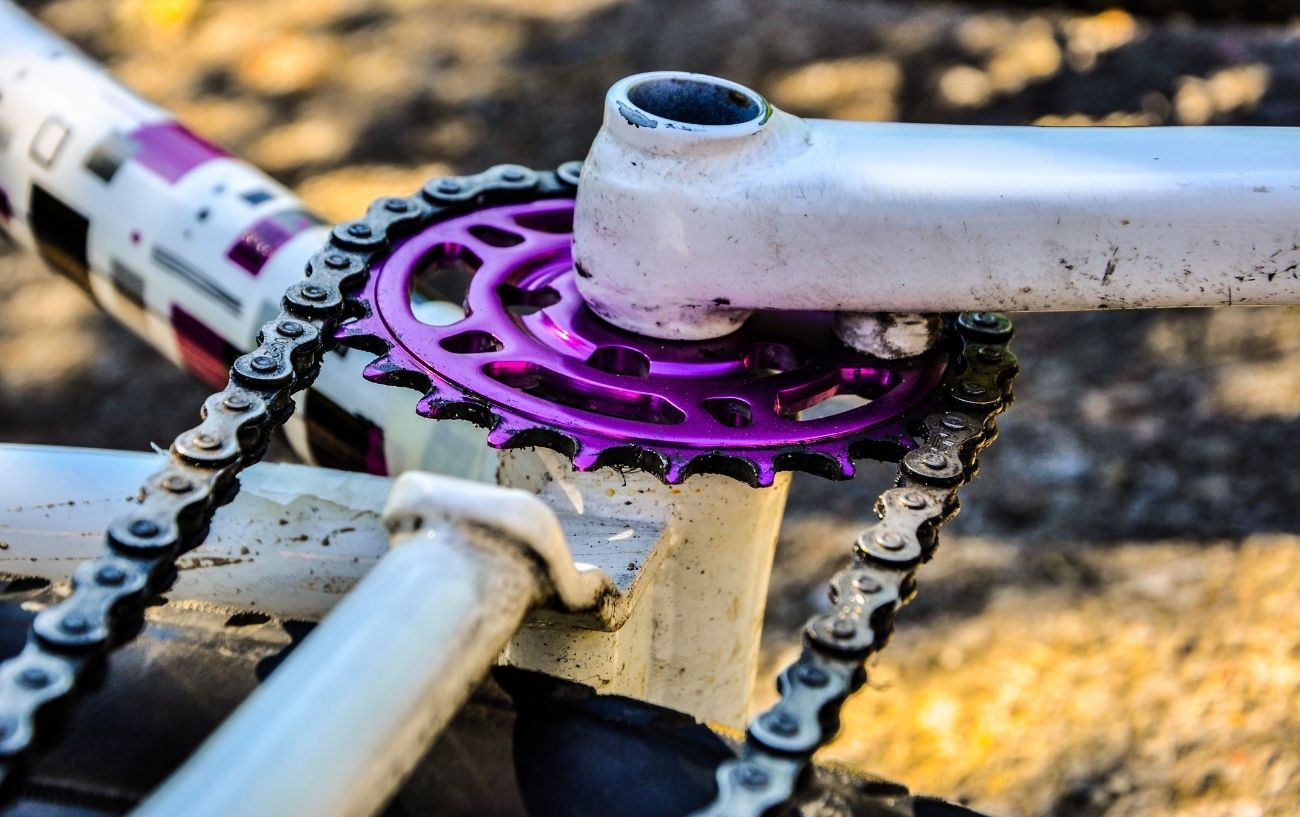1x drivetrains seem to be growing in popularity with every passing year.
Bicycles traditionally feature two (2x) or three (3x) chainrings with a front derailleur. Although two chainrings have dominated mainly as of late, an increasing number of bikes are starting to incorporate a 1x drivetrain.
Pronounced “one-by”, it is comprised of a single chainring connected to the crankset with no front derailleur.
In this article, we’ll be covering:
Let’s take a look!

What is a 1x drivetrain?
The drivetrain is composed of the mechanical parts of your bike which propel you forward, including:
- Chainrings
- Cassette
- Cranks
- Front and Rear Derailleurs
- Chain
A 1x drivetrain features a single chainring (the front set of gears).
Throughout their evolution, bikes have often been equipped with either two or three chainrings, with a front derailleur moving between them.
Having additional chainrings allowed bikes to offer the rider a more comprehensive range of gears with less noticeable jumps between each gear.

A 3x or 2x system allows riders to fine-tune their gear, giving them the tools to match the resistance of the terrain.
On a 2x setup, the inner chainring usually enables the rider to enter into an easier gear with fewer adjustments than would be required on a 1x setup.
1x drivetrains only have one chainring, eliminating the front derailleur.
To mitigate the loss of gear range, bikes with 1x drivetrains feature a wider-range cassette. A more comprehensive cassette ensures you have an adequate gear range for those more strenuous climbs without additional chainrings.
Many 1x drivetrains focus on increasing chain retention, reducing the chance the chain will fall off while riding on bumpy terrain.
One way this is achieved is by using alternating narrow-wide teeth on the chainring, meshing with the chain, allowing it to be better retained.

1x Drivetrains on mountain, gravel, and road bikes
1x Drivetrain Mountain Bikes
The 1x drivetrain MTB combo has existed for many years, with 1x popularity surging when SRAM introduced its 1×11 XX1 groupset in October 2012.
SRAM was the first to design 12-speed drivetrains with its Eagle drivetrain ecosystem in 2016.
Most mountain bike manufacturers have fully adopted 1x systems due to the simplicity of the single chainring setup.
The omission of the front derailleur also allows greater creativity with frame design.
More space on the handlebars allows for more straightforward positioning of a dropper post trigger, making the bike more versatile over different terrain.
By reducing the clutter around the front chainring, there are more options for pivot-point placement.
Pivot points can be made wider, which improves stiffness. More space also allows for fewer compromises when considering suspension kinematics, improving features such as rear-suspension design or frame compliance.

1x drivetrain gravel bike
Gravel bikes are increasingly being designed to run 1x only, but many still offer 2x drivetrains.
The “Big Three” manufacturers all offer sophisticated 1x groupsets for gravel bikes.
SRAM led the way with the Force CX1 1x drivetrain and now offers an electronic groupset in the form of XPLR eTap AXS.
Shimano GRX was released in 2019 and offers dedicated 1x components for gravel bikes.
Last but not least was Campagnolo, who introduced the Ekar groupset in 2020 – featuring a 1x, 13-speed system.
As opposed to MTBs, gravel riding is more likely to mix in tarmac to your rides. If this is the case, a greater gear selection on a 2x drivetrain allows you to find a more optimal cadence.

1x drivetrain road bike
It’s still rare to see a road bike running a 1x drivetrain.
Road biking is typically more gradual in gradient changes, unlike gravel and mountain bikes, where your riding sees you heading out on more technical and unpredictable terrain.
For this reason, a 2x drivetrain is the preferred choice as it provides a more precise gear ratio than 1x drivetrains.
That said, SRAM offers a 1x drivetrain version of all of its road groupsets except the flagship RED range.
Using a 1x drivetrain is gaining popularity in time trials, particularly on flatter stages where the extensive gear range is unnecessary.

What are the advantages of 1x Drivetrains?
1x drivetrains have plenty going for them!
Here are the top five reasons you should consider one:
#1: Simplicity
You need only to shift the gears up and down the cassette. There is no front derailleur to navigate.
A 1x drivetrain also eliminates duplicate gears. On most 2x and 3x setups, there are generally several duplicate gears that have the same gear ratio.

#2: Weight reduction
Removing chainrings, front derailleurs, and cables means 1x drivetrains generally come in lighter than their 2x or 3x cousins.
Nevertheless, some of the weight-saving gains will be mitigated by extra weight in other areas.
A clutch-equipped rear derailleur, which helps the chain stay on, usually weighs more than a non-clutch rear derailleur.
Additionally, a wider-ranging cassette will weigh significantly more than its smaller 2x counterpart.
We are always trying to shed weight off a bike, but to what end? Eating a lighter meal before you set off may save you more weight than removing a chainring.

#3: Maintenance
Your front derailleur can’t break if it doesn’t exist, so there is no need to replace it. It is easier to maintain one derailleur instead of two.
No need to take your bike to a mechanic when the chain begins to rub on the inner cage plate.
Cleaning becomes significantly more manageable, with the front derailleur often acting as a refuge for dirt and grime.
#4: Frame design freedom
For a 1x mountain bike drivetrain, the absence of a front derailleur mount frees up space, allowing for more complex suspension designs and kinematics.
More specifically, the extra space means that suspension pivots can be relocated down the seat tube, enhancing the suspension’s effectiveness.
Extra space also allows manufacturers to adjust seat tube design, increasing tire clearance, frame stiffness, or compliance.
1x drivetrains allow for shorter chainstay lengths, creating a more nimble ride. For this reason, 1x drivetrains are being seen more in crit races.

What are the disadvantages of 1x?
It all sounds pretty nifty so far – so why doesn’t everyone run 1x?
#1: Larger jumps between gears
1x drivetrains have far fewer gears than their 2x counterparts. Nonetheless, they need to cover a similar gear range.
Most 1x drivetrains have massive rear cassettes to compensate for the lack of gears. The SRAM Eagle, for example, comes with a huge 10-52 tooth cassette.
The large jumps between gears can disrupt cadence, making it harder to find a rhythm.
This particular issue explains why 1x drivetrains are more often found on MTBs and gravel bikes rather than road bikes.
Fast fluctuating terrain requires less specificity, whereas more gradual increases require more accurate gearing.

#2: Chain angle
With the inability to switch to a smaller chainring, you experience more extreme chain angles when in the smallest or largest gear.
This results in 1x drivetrains typically being less efficient than 2x drivetrains with a more extensive gear range.
This particular efficiency loss requires the rider to know the correct gear to be running at any given time.
Additionally, due to extreme chain angles, your chain may wear at a faster rate than on a 2x or 3x drivetrain system.
Should I use a 1x drivetrain?
It may be great to shed that extra weight and complicated components, but at what cost?
If you are commuting along a trouble-free, relatively flat route and you would prefer simplicity and easy maintenance; then a 1x drivetrain may be a great option.
Similarly, if you stick to gravel or trail when riding, the importance of finding a consistent rhythm for long stretches is low, and as such, gear specificity isn’t as vital.
However, if your route is undulating, with gradual increases or decreases over long periods, then you will thank yourself when you have the extra gears to find that “sweet spot”.
Every rider is different – the only way to know for sure whether you should be riding with a 1x drivetrain is to try one out for yourself!



